Revisiting Rainforest Rescue’s International Impact
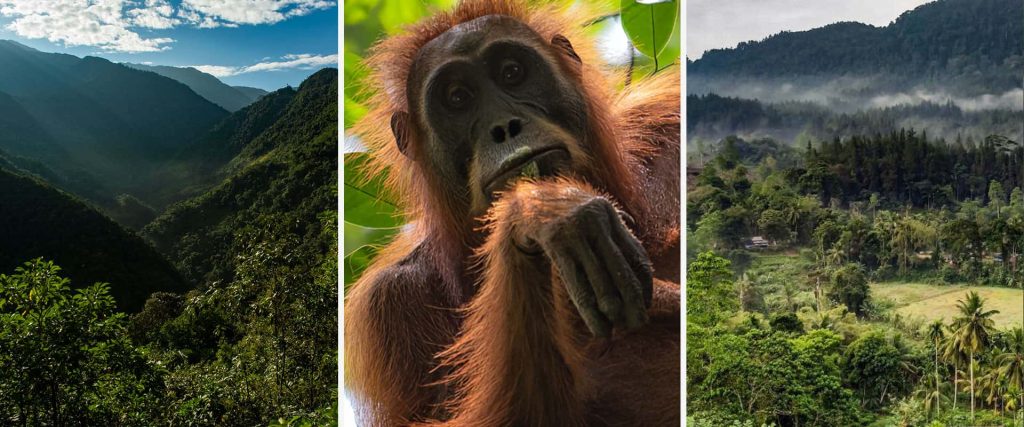
Long-time supporters of Rainforest Rescue may recall that the Daintree was just one of several areas of high priority conservation concern during the late 2000s and early 2010s.
Back then, through the generosity of our donors, we were able to assist international projects in Ecuador, Sri Lanka and Indonesia, with each rainforest region having specific threats that needed to be addressed. Since then, as Rainforest Rescue has focused its actions on the world’s oldest rainforest, the Daintree/Julyamba, our international partners have contiuned their work.
As part of our 25th anniversary series, we look back at those projects and check-in to see the international impact of our (and your) contributions around the world.
Ecuador’s Cloud Forests – Chocó-Darien/Andean Wildlife Corridor
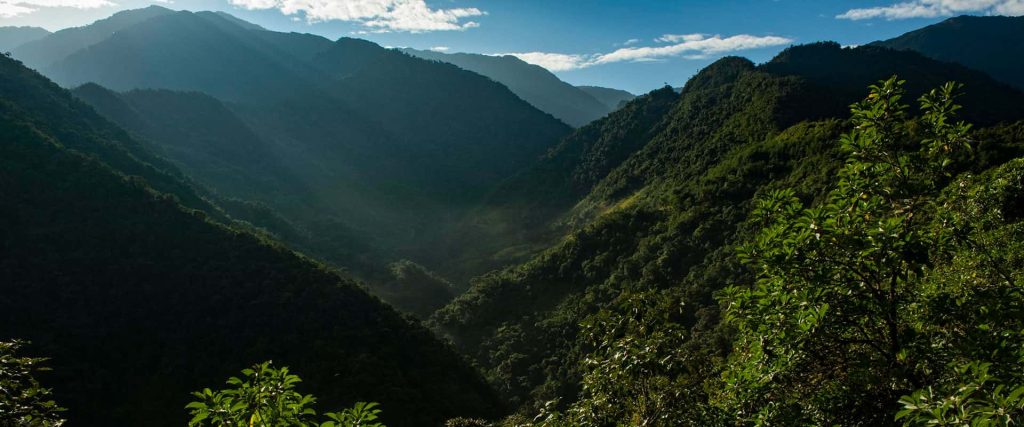
Despite placing at number 9 on the top 10 biggest tropical rainforests in the world, the Cloud Forests and adjacent lowland Rainforests of Ecuador are considered the most biodiverse places on Earth. A global hotspot for plant and bird species, these habitats have become an ecotourism drawcard for the country.
In 2003, Rainforest Rescue began partnering with Rainforest Concern, a UK-based organisation that supported local conservation projects in Ecuador. At the time, the Chocó-Darien and Andean Forest areas were partially disconnected. From the 1990s, prospective mining, agriculture and development had disrupted the natural flow between the highlands and lowlands, isolating species and impacting on genetic diversity.
Rainforest Concern had successfully connected two areas with a northern biodiversity corridor before Rainforest Rescue began supporting the land acquisition required to stitch together the southern corridor.
Sarah Fraser, coordinator of Rainforest Concern’s Ecuadorian projects kindly provided us with this detailed progress update:
“It is over twenty years since Rainforest Rescue supported Rainforest Concern on the southern phase of the Chocó-Andean corridor in north west Ecuador – a project to create connectivity of habitat between protected areas to conserve important watersheds, assist species migration and survival.
Since then, the project has gone from strength to strength. As part of this project, we created our own protected forest reserve, the Neblina Reserve, to form a vital link between two large, protected reserves (including the Cotacachi Cayapas Ecological Reserve).
Located in the Intag region of Ecuador, the Neblina Reserve is predominately cloud forest. Cloud forests play an important role in the water cycle, acting like sponges, capturing water and feeding the rivers, reducing risk of soil erosion and downstream flooding. They contribute to other essential ecosystem services, capturing carbon in soil and trees.
The reserve lies within Tropical Andes global biodiversity hotspot – the most species rich of the world’s 36 GBHs. It is also part of a Key Priority Area in the GBH – reflecting its high biological importance. The forests offer essential habitat to many rare and endemic species, including four cat species, olinguito (new to science 2013), Andean bear, cock of the rock, black-and-chestnut eagle, and plate-billed mountain toucan.
The Neblina Reserve is over 2,700 hectares and growing. A committed team of forest guards patrol the reserve. We monitor and research that biodiversity of the forests to better understand the ecosystem as well as assess the success of our conservation strategies. And we engage in local outreach such as environment education and sustainable income support to address some of the small scale drivers of forest degradation and deforestation.
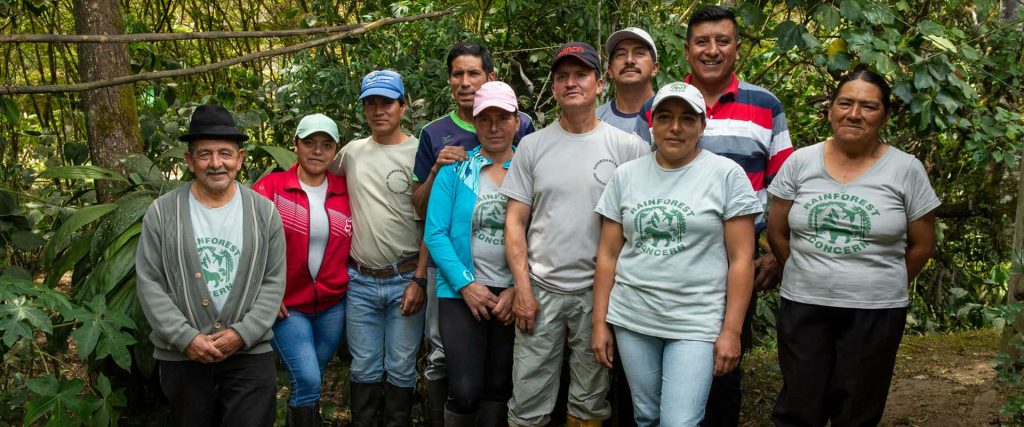
Forest Guards in the Neblina Reserve ©Rainforest Concern
Recently, we have successfully gone through the long process of applying for legally protected status with the Ecuadorian Government and are proud to announce that three areas of the Neblina Reserve are now covered under SNAP (National System of Protected Areas) – the highest legal protection we can aspire to as a private reserve.
We look forward to continuing our work to protect the vital habitats of the Tropical Andes and to protect and expand the southern phase of the Chocó-Andean corridor project.
Many congratulations to Rainforest Rescue on their 25th anniversary. Like us, they recognise the urgent need to identify vulnerable habitat on our fragile blue planet, then roll up their sleeves and protect it. Long may they continue.”
Thank you, Sarah! Rainforest Concern celebrates 30 years of conservation and habitat protection this year, with their grass-roots projects in Ecuador spanning over a generation. The time since Rainforest Rescue’s partnership has clearly paid dividends.
Sri Lanka’s Southern Rainforests – Sinharaja/Kanneliya Wildlife Corridor
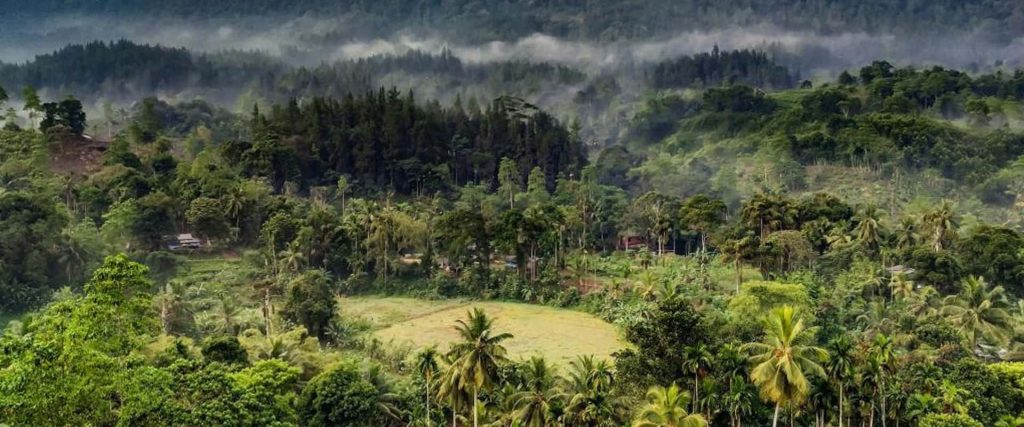
Sinharaja Rainforest alongside encroaching tea and palm plantations. ©War on Want
Similar to lowland rainforest across the developing world, Sri Lanka’s remaining tracts were under intense threat from clearing for agriculture and domestic use when we first began work there in 2008.
Rainforest Rescue partnered with Sri Lankan-based Rainforest Rescue International to restore and conserve the highly threatened rainforest habitat between the Sinharaja World Heritage Forest Reserve and Kanneliya Forest Reserve. Connecting these two protected areas with a wildlife corridor would support genetic diversity and ease the pressure on already threatened endemic species.
Fundraising in Australia and further afield supported the growth, planting and initial maintenance of native rainforest plants in restoration sites along the corridor. A mosaic of restorable land belonging to schools, temples and in private ownership was used to create a canopy between the two major protected areas, linking the highlands of Sinharaja with the lowland of Kanneliya.
Since then, the region remains under pressure, in particular from cash-crop monoculture plantations such as tea and palm oil.
However, Rainforest Rescue also supported local education projects to raise awareness of the rainforest’s importance, as well as the impact of farming. Evidence suggests that many locals in the area have evolved their farming practices to move towards more sustainable livelihoods. The commercial farming practices are showing signs of change too, with Dilmah’s Endana Biodiversity Corridor an example of degraded plantation land returning to rainforest.
Buffer zones adjacent to the World Heritage protected areas are now under protection from organisations like Rainforest Protectors Trust, yet it remains unclear if the proposed Wildlife Corridor will remain a safe zone for wildlife alone or if industrial-scale farming is merely biding its time.
Indonesia’s Sumatran Rainforest Crisis – Restoring Gunung Leuser National Park
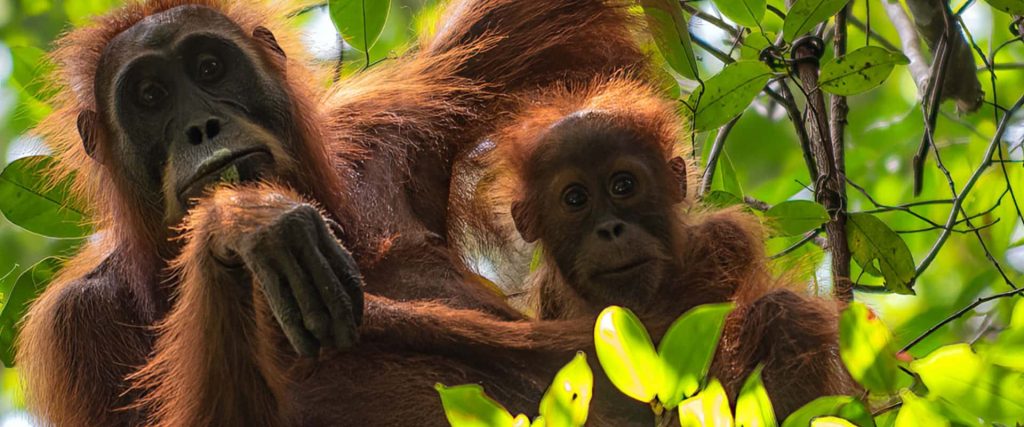
Sumatran Orangutans ©Rio Ardi/Orangutan Information Centre
The plight of Orangutans in Indonesia is well documented, with catastrophic declines in their numbers due to logging and clearance of rainforest habitat for commercial agriculture. In 2009, Rainforest Rescue began partnering with the Orangutan Information Centre (OIC) to restore vital areas of lowland rainforest in northern Sumatra’s Gunung Leuser National Park.
It’s no surprise that Oil Palm farming was the primary culprit at the time, with illegal plantations creeping into protected areas, replacing biodiversity with a desert of palms.
Rainforest Rescue supported two important activities – funding the planting of tens of thousands of trees in areas that reclaimed land once again for the rainforest; and the education required in effective and efficient restoration techniques to ensure that every plant in the ground made a difference.
International attention meant that projects like this in Sumatra were readily attended to, several years later it was clear that OIC was making a tangible difference in the region. 154,000 trees were planted through our partnership, across 140 hectares of degraded rainforest.
Since then, the team that Rainforest Rescue supported with education have increased their success rate of tree plantings to over 80%. This minimises the need for re-management of previously restored areas, allowing the OIC’s work to cover larger and larger areas of restoration. One success story is the 320 hectares of Selamanya Hutan, on the edge of the National Park. In 2023 alone, 70 hectares of this area were restored, transforming a former palm oil plantation back into natural rainforest habitat.
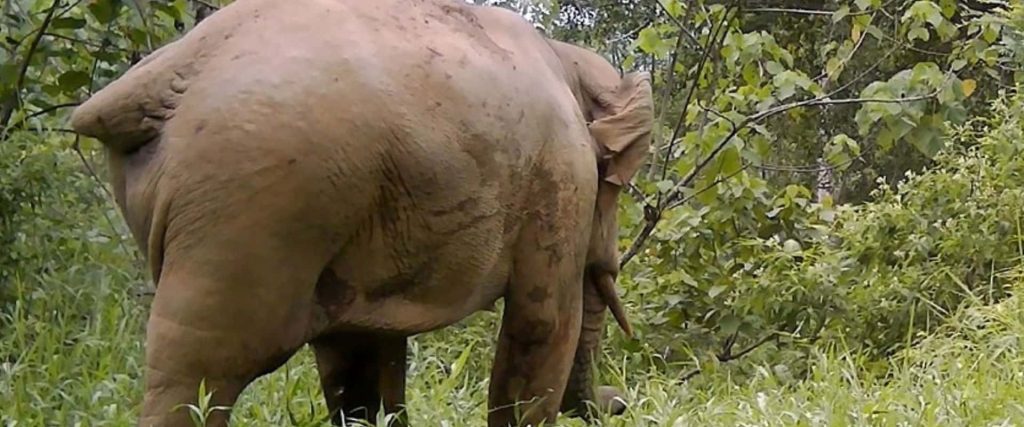
Sumatran Elephant in a restored area of Gunung Leuser National Park ©Sumatran Orangutan Society
Reports from in situ camera traps indicate that large animals, such as wild pigs, Sumatran elephants (shown above) and species of monkeys and wild cats are frequenting the area. It’s a positive indicator that habitat restoration projects are making a difference, especially with long-term input from OIC who have been active in the region for over 20 years. Further, two Sumatran Tigers were recently released into the National Park as part of an ongoing program involving the national government.
North Sumatra remains an area where conservation and commercialisation collide, but the efforts of the OIC and other partners indicates there could be a good deal more than a glimmer of hope for the future of the Orangutan and other species in the Indonesian rainforest.
Generation Restoration
Almost 20 years have passed since Rainforest Rescue was actively involved in multiple international impact projects. As we’ve seen, the localised challenges have a familiar tone to them. The clash of land use, the risk of species loss and the impact on biodiversity and environmental degradation.
What is also apparent is that we are well into a new generation of conservation practices, including restoration of rainforest habitat and community education of the importance of bioregions. We’ve seen local communities embrace their surroundings, much like those who live in or near to the Daintree Rainforest do.
It’s not too much to imagine that the long-term impact of being able to support projects near and far is the embedding of stewardship in these places. What is around us is precious and finite, it’s fragile and susceptible to our actions, but if we choose to, we can see the difference we can make.
Because if we don’t take up the United Nation’s Environment Programme call to arms of joining ‘Generation Restoration’, what’s the alternative?
Note: Links to organisations within this article are for information purposes only. Please perform your own due diligence before considering a donation to any not-for-profit project.
Want more good Rainforest news in your life?
Subscribe to our eNews | Follow us on Instagram | Like us on Facebook | Subscribe to our YouTube channel
Help Protect Rainforests Forever
Donate to Protect Rainforests Forever | Become a Rainforest Guardian for as little as $2 a month | Partnership Options

